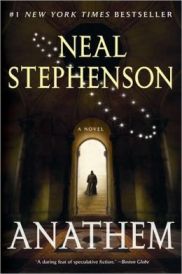
Barbarians at the Gate
I literally just finished Barbarians at the Gate, by Bryan Burrough and John Helyar. I mentioned it previously in my “five favorite business books” post. On the face of it this is a book about KKR’s $25 billion leveraged buyout (LBO) of RJR Nabisco in 1989 — the largest such deal in history at the time.
Really, though, Barbarians at the Gate is the epic, sweeping tale of a seismic shift in American corporate culture. It’s the Game of Thrones of business books. Minus the creepy incest subplot, of course.
The LBO had its heyday in the 1980s. For those unfamiliar with the term, an LBO involves a partnership of some sort, usually involving private equity in some form, buying all the outstanding shares of a public company to take it private, in many cases with the help of a sympathetic management team. “Hostile” deals happen when management is not so sympathetic.
In this context “leverage” is really just a fancy word for debt. The idea is to take a strong company with a “low” stock price (e.g. a stock price management and others feel is undervalued) and buy it back at something more akin to its “true” (higher) value. Obviously this can get expensive in a hurry. So you fund the deal with debt. Lots and lots of debt. In the ’80s when the RJR deal happened, the bulk of this debt came in the form of high-yield bonds, more commonly referred to as “junk bonds.”
On the face of it everyone wins. Investors get a premium for their shares. Friendly management often gets a handsome payout — and sometimes keeps control of the newly-private firm. The investment banks and law firms that advise on the deals and line up the financing get massive fees for their efforts. In the RJR Nabisco deal, for example, Drexel Burnham Lambert earned over $200 million for arranging a $3.5 billion bridge loan.
As much as Barbarians at the Gate is about a specific deal, it is also about a massive shift in coprorate cultures that occured in the 1980s. It was no longer okay to simply run a stable business with a steady hand. Investors and managers wanted to earn. Barbarians at the Gate tracks an enormous cast of characters with varying ambitions. In fact ambition is the common denominator for all cast members. RJR Nabisco’s CEO, Ross Johnson, lived by the motto “a few million dollars are lost in the sands of time.”
This excerpt pretty well sums it up:
In its final decade Reynolds had become less a great copmany than a great dream machine. Its torrent of tobacco money allowed egos to run wild and fantasies to become true. Paul Sticht could walk with kings. Ed Horrigan could live like kings. Directors could be treated like kings.
Hoisted onto the auction block, the company became a vast prism through which scores of Wall Streeters beheld their reflected glories. Jim Maher could restore First Boston’s greatness. Ted Forstmann could pursue his final jihad. Peter Cohen could go from administrator to merchant-banking prince. Henry Kravis could have an empire’s crowning touch. John Gutfreund could get the left side of the ultimate tombstone.
The founders of both RJR and Nabisco would have utterly failed to understand what was going on here. It is not so hard, in the mind’s eye, to see R.J. Reynolds and Adolphus Green wandering through the carnage of the LBO war. They would turn to one another, occasionally, to ask puzzled questions. Why did these people care so much about what came out of their computers and so little about what came out of their factories? Why were they so intent on breaking up instead of building up? And last: What did this all have to do with doing business?
This reads a lot more ominous in the wake of the 2008 financial crisis. It’s precisely the kind of thing that gets people’s blood pressure up: the idea that Wall Street is a casino run for a few insiders’ and egomaniacs’ benefit.
Perhaps then it’s instructive to note that the RJR Nabisco LBO marked the high water mark in most of the key players’ careers. From the book:
“The great money machine behind LBOs — junk bonds — sputtered and for a time virtually stopped. Mike Milken went to jail; Drexel Burnham went bankrupt […]
[…] Henry Kravis ceased stalking big game, preoccupied with the care and feeding — and debt service — of RJR. John Gutfreund was ousted as chairman of Solomon Brothers in 1991, after a treasuries trading scandal. His president, Tom Strauss, also resigned at joined Peter Cohen in obscurity at a hedge fund.”
It may be a bit over-egged, but reflecting on Barbarians at the Gate now I am reminded of a quote from Akira Kurosawa’a Ran:
We too are children of this age…weaned on strife and chaos. We are your sons, yet you count on our fidelity. In my eyes, that makes you a fool.






